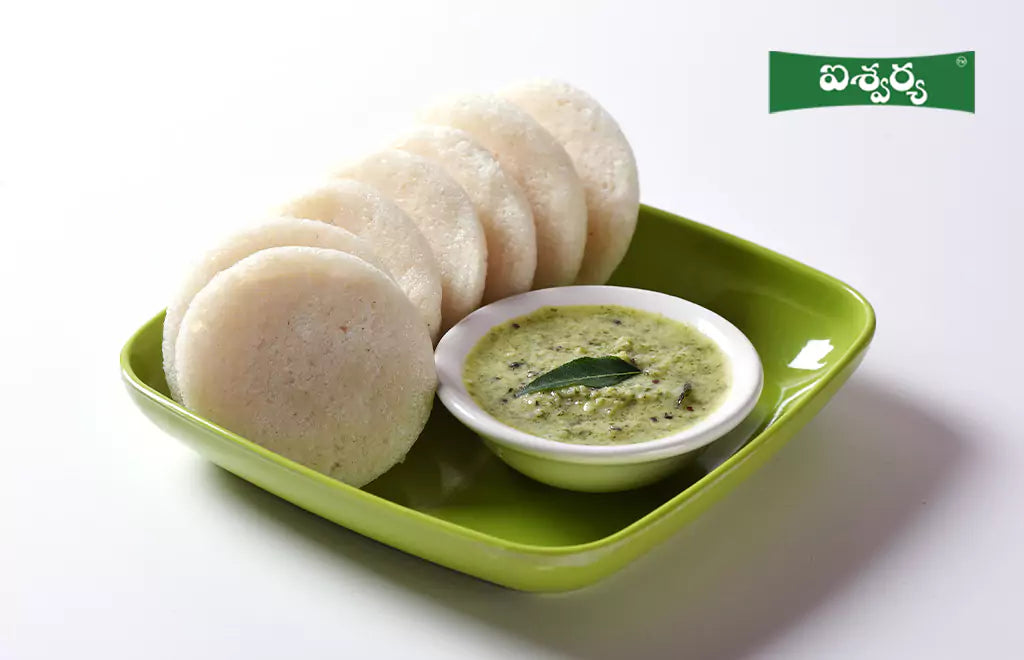
Why your Idlys Turn Out Hard and how to make them Soft Every Time
If you’ve grown up enjoying soft, fluffy idlys in your home or at your favourite South Indian breakfast place, you know how satisfying that first bite can be. But try replicating that perfection at home, and you might end up with idlys that are hard, rubbery, or flat. And no, it’s not always your technique or ingredients that are to blame. There’s a lesser-known reason behind those disappointing batches of idlys, and it has everything to do with the type of idly ravva you use.
What you might be Missing
We often talk about fermentation, soaking times, or the rice-to-dal ratio when troubleshooting idlys. These are important, of course. But many people don’t realize that the texture of your idly ravva can quietly influence everything.
If the ravva is coarse or unevenly processed, it doesn’t soak properly. Even after hours in water, it can stay gritty or dense. That kind of texture leads to batter that’s thick in some places and runny in others. As a result, fermentation becomes unpredictable, and the batter can’t trap enough air. Without that, idlys turn out flat instead of fluffy.

The Big Difference Fine Ravva can make
Switching to fine-textured idly ravva can considerably enhance your idly-making experience. This sort of ravva absorbs water quickly, generally requiring just 15 to 20 minutes of soaking. Once soaked, it blends smoothly with urad dal paste to shape a consistent, lump-free batter.
A smoother batter promotes even fermentation, which is essential for creating soft, airy idlys. During fermentation, tiny air pockets develop within the batter, giving the idlys their signature lightness and fluffy texture. This not only improves taste but also ensures the idlys cook evenly and retain a soft bite with every mouthful.
Why this Matters for Everyday Cooking
In most Indian homes, mornings are rushed. You’re juggling chores, packing lunches, and trying to get breakfast on the table. Spending hours soaking and prepping ingredients isn't always practical.
That’s why using a better-quality idly ravva makes life easier, especially for soft, fluffy idlys. Fine idly ravva not only reduce soaking time but also give consistent results without much fuss. And while it is specially crafted for idlys, its smooth texture also works well in dishes like dosas, paniyarams, and kichdi. This makes it perfect for families cooking for kids or older members who prefer softer textures in every meal.

How to Choose Good Idly Ravva
Not all ravva is made the same. Here are a few tips to pick the right one:
- Look for uniform texture. It shouldn’t feel gritty or look powdery.
- Soaking should be quick. If it still feels tough after hours, it’s not fine enough.
- Stone-ground ravva tends to retain more of the natural aroma and nutrients of the rice.
- It should mix easily with urad dal paste, without forming clumps or settling at the bottom.
Choosing the right ravva sets you up for better batter, and that means better idlys.
One Option you can Try
If you're looking for a reliable option, you might want to try Aishwarya Idly Ravva. It’s stone-ground and has a fine, even texture. In my experience, it soaks fast, blends well with urad dal, and helps the batter ferment just the way it should. Beyond texture, this ravva is naturally rich in fiber and protein, which not only supports digestion but also adds nutritional value to your idlys, making them a healthier choice for the whole family.
This isn’t a product pitch. It’s just something that worked well in my kitchen, and it might help you too if you're struggling with your idly' texture.

Simple Tips for Better Idlys
Even small tweaks in your routine can make a big difference:
- Soak fine idly ravva for just 15 to 20 minutes.
- Mix it gently but thoroughly with urad dal paste. The batter should feel smooth and light.>
- Let the batter ferment in a warm, undisturbed spot for 6 to 8 hours.
- Once you see bubbles and a rise in volume, you’re good to go.
- Steam the idlys on medium heat for about 10 to 12 minutes.
- The very first batch will show you the results.
Final Thoughts
Idlys are simple on the surface, but getting them right is all about small details. Even if you’re using good dal and have the fermentation figured out, the wrong ravva can still hold you back.
If your idlys aren’t turning out the way you want, consider switching to a better-quality ravva. A fine, stone-ground variety like Aishwarya Idly Ravva can improve the texture, cut down prep time, and make the whole process feel easier. Plus, with its natural fiber and protein content, it gives your idlys a nutritious boost. It’s a small change that brings you closer to that soft, restaurant-style idly every time.
Give it a try and enjoy your mornings with idlys that are light, fluffy, and just right.

